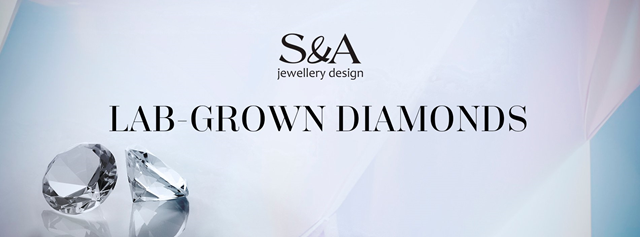
Lab-Grown Diamonds
Let’s Grow a Diamond
In nature, the formation of diamond crystals takes millions of years and is the result of dynamic processes occurring deep within the Earth. Extreme temperature and pressure at a depth of 160 km below the surface cause carbon to form crystals. Diamonds are brought to the surface during volcanic eruptions.
In 1954, a chemist working at GE managed to recreate conditions similar to those inside the Earth in a laboratory. Using high temperature and pressure, he grew the first lab-grown diamond. The growing process takes only a few days, and physically, chemically, and optically, such a diamond is indistinguishable from a natural one. Although scientists have developed other diamond production methods over the years, the HPHT (High-Pressure High-Temperature) method remains the most popular.
A Woman’s Best Friend
Before women realized that diamonds are their best friend, their popularity was relatively low. Until the 19th century, global diamond production was just 200 kilograms per year. Everything changed in 1866. The discovery of vast diamond deposits in South Africa shook the market and could have caused a drastic drop in the price of this unique natural product. Controlling demand and supply became essential. The first diamond cartel was formed, allowing price control, but high demand was still needed. The image of diamonds as a coveted object was created by De Beers in the mid-20th century. Large-scale marketing campaigns convinced people that “diamonds are forever” and symbolize lasting, eternal love. While in 1939 only 10% of engagement rings were adorned with diamonds, by 1990, it was 80%. In 2023, diamond production exceeded 22 tons…
A New Best Friend for Women
The popularization of production and the decrease in the price of a woman’s new best friend led De Beers to announce its exit from the lab-grown diamond sector this June. De Beers’ new strategy is aimed at revitalizing the natural diamond market. Along with Chow Tai Fook and Signet Jewelers, they will emphasize the authenticity, natural origin, and uniqueness of diamonds. Diamonds created by nature also have one significant advantage over those made artificially—resale value.
On the other hand, luxury brands like Prada and Tag Heuer are driving the sale of lab-grown diamonds. The marketing of lab-grown diamonds focuses on emphasizing their production in a way that doesn’t disturb the ecological balance, ethical treatment of workers, and supply chain transparency—values important to the younger generation. Whether we like it or not, Generation Z is expected to become a powerful demographic with significant purchasing power within a decade. Looking to the future, it will be the younger generations deciding demand. Research shows that 70% of Millennials are interested in lab-grown diamonds for engagement rings. While lab-grown diamonds don’t have resale value, it doesn’t matter much for engagement rings, as they aren’t typically resold anyway.
According to the Rapaport research, the retailers achieve higher margins on lab-grown diamonds what encourages them to promote lab-grown actively to consumers in-store. However, they must sell more volume to make the same profit.
It’s predicted that by 2030, lab-grown diamonds will cover 20-30% of the diamond market. Competition and growing production capabilities (especially in India and China) will lead to further price drops, encouraging purchases by customers with smaller budgets. Once the market stabilizes, we may also see an increase in the resale value of lab-grown diamonds.
Just as the discovery of the Kimberley deposits changed the market 150 years ago, the development of lab-grown diamond production marks the beginning of a new era in the history of diamonds. At S&A, we use natural diamonds in our regular collections but also create custom collections with lab-grown diamonds in any size and shape for prestigious brands. So, if you’d like us to design and craft jewelry with lab-grown diamonds for you, contact us.
